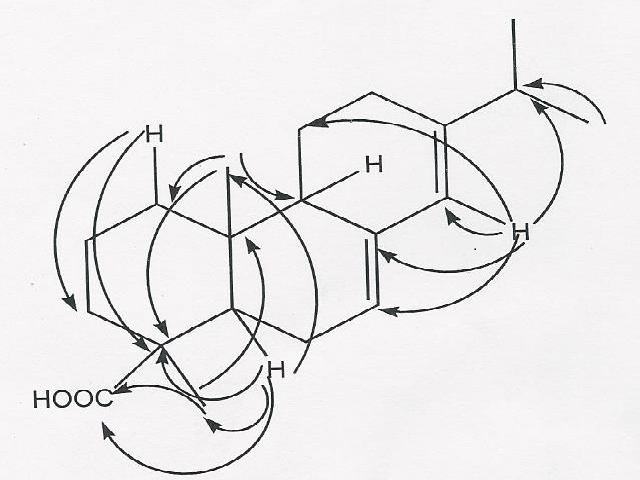Antioxidant, Antibacterial and Antiacetylcholinesterase Activities of Abietic Acid from Isodon Wightii (Bentham) H. Hara
DOI:
https://doi.org/10.5530/fra.2015.1.1Keywords:
Abietic acid, Antioxidant, Antibacterial, Antiacetylcholinesterase, Column Chromatography, Silica gel G-60, NMRAbstract
Objective: Isodon is an important genus of the family Lamiaceae which contains diterpenoids of diverse functionalities. The present study attempted with isolation, structure elucidation and bioactivity evaluation of isolated compound from the leaves of Isodon wightii (Bentham) H. Hara. Methods: Petroleum ether extract of powdered leaves was obtained and concentrated in vacuo at 45ºC. Compound was isolated using silica gel column chromatography (60-120 mesh). Antioxidant activity of isolated compound was tested for DPPH free radical and hydroxyl radical scavenging, inhibition of linoleic acid peroxidation and metal ion chelation activities. Antibacterial activity was tested against six pathogenic bacteria by micro broth dilution method and in vitro antiacetyl cholinesterase activity of isolated compound was also studied. Results: Abietane diterpenoid, abietic acid was isolated from the leaves of I. wightii and the structure has been elucidated on the basis of spectroscopic analysis. Abietic acid isolated from petroleum ether extract of leaves showed moderate DPPH free radical, hydroxyl radical scavenging and less inhibition of linoleic acid peroxidation and metal ion chelating activities. Antibacterial activity of abietic acid against Escherichia coli, Klebsiella pneumoniae, Pseudomonas aeruginosa, Proteus mirabilis, Proteus vulgaris and Staphylococcus aureus was found in the range of 340-980 μg/mL. Antiacetylcholinesterase activity of abietic acid was less when compared with positive control. Conclusion: Abietic acid showed concentration dependent antioxidant, antibacterial and antiacetylcholinesterase activities.
Downloads
Metrics





